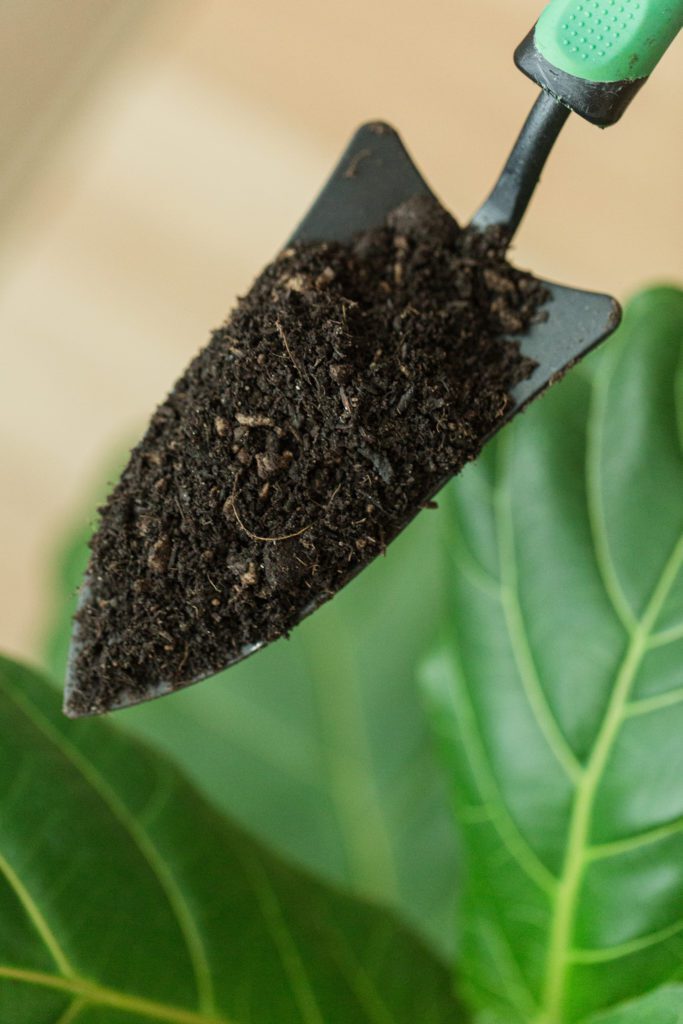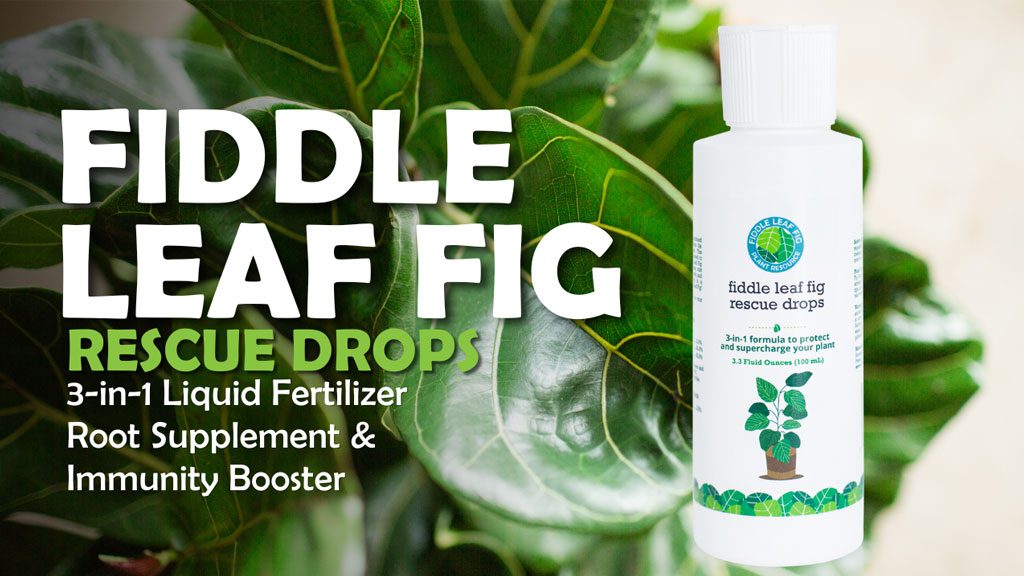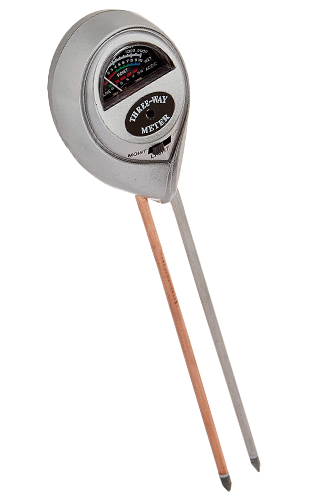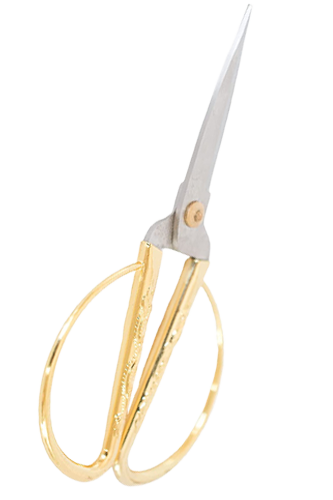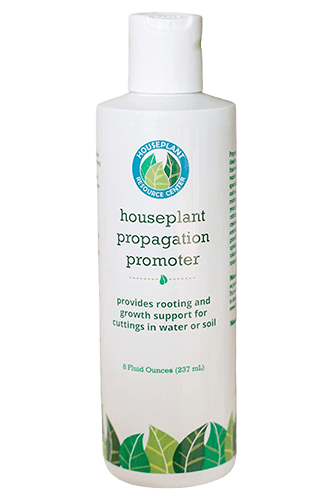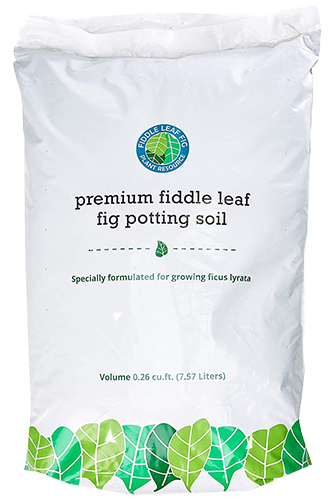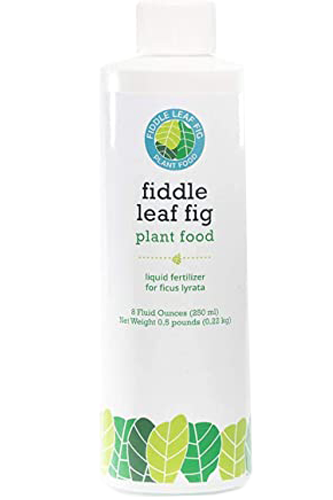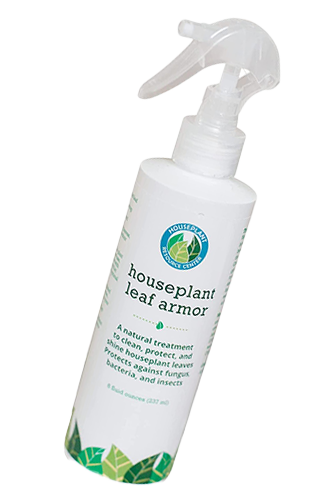
One of the most important parts of keeping a fiddle leaf fig—or any plant—healthy is ensuring that it’s planted in the right soil. The correct fiddle leaf fig soil recipe can make a massive difference in the overall health and appearance of your plant!
Now, you’ll hear all kinds of different advice about what kind of soil to use for fiddle leaf figs.
Before we crafted the perfect soil recipe for these plants, I always used a 50/50 blend of indoor potting mix and cactus soil. I’ve also seen lots of people get great results from cactus soil alone.
The most important thing is to find a mixture that drains well because fiddle leaf figs don’t like to sit in water.
This leads to yellowing and even root rot, and it also increases the risk of insect infestation.
In addition to drainage, the perfect fiddle leaf fig soil should retain the right nutrients to support healthy leaf growth and root structure and should maintain a pH of 6 or higher.
After years of testing and tweaking, we finally landed on the ideal fiddle leaf fig soil recipe!
You can buy our premixed version, Fiddle Leaf Fig Soil, or make your own!
Our Fiddle Leaf Fig Soil Recipe:
Soil – 16.7%
Compost – 16.7%
Bark – 16.7%
Char – 8.3%
Coconut Fiber – 25.0%
Pumice – 16.7%
Note on pumice vs. perlite:
If you’ve ever wondered about the difference between pumice and perlite, they’re actually very similar. Pumice and perlite are made from the same material but processed in a slightly different way. Pumice happens naturally in the ground, perlite happens in a factory. We used pumice in our last batch of Fiddle Leaf Fig Soil and loved it, so we’re going to continue using it in our formula.
We’ve found this mixture provides the perfect balance of moisture retention and drainage while also maintaining the ideal pH for fiddle leaf figs. It’s the best of all worlds!
Fiddle Leaf Fig Soil and Potting Tips
Choose the right pot
The right soil is a great start, but it’s also essential to choose the right pot and repot regularly.
Make sure to pot your fiddle leaf fig in a pot that’s no larger than 2-3 inches bigger than the root ball. They like to be snug in their pots. It’s also vital that your pot has drainage holes, or your fiddle will develop root rot in no time.
If you fall in love with a decorative pot with no drainage, no problem.
Simply pot your plant in a smaller pot with drainage and place it inside the decorative pot. When you water the plant, just remove the inner pot so it can drain in the sink, tub, or outside.
Repot once a year
Healthy fiddles grow quickly, so you’ll want to repot your plant at least once a year, and make sure to go up a pot size and use fresh soil.
This will replenish the nutrients in your plant’s soil and give it more room to grow.
Here’s our guide to repotting your fiddle leaf fig.
And, of course, make sure to supply your fiddle leaf fig with nutrients in the form of liquid fertilizer, because a fiddle will use up all the nutrients in even the best soil in just months.
Fiddle Leaf Fig Food is great for this because it’s gentle enough to use with each watering, which takes all the guesswork out of fertilizing.
The better the soil you provide your fiddle, the healthier it will be! Try Fiddle Leaf Fig Soil (or whip up your own with our recipe!) and watch your tree reach new heights!
To learn more:
- Sign up for our free Fiddle Leaf Fig Care 101 Webinar and make sure you’re subscribed to our newsletter.
- Download our free Propagation Guide
- Read The Fiddle Leaf Fig Expert, your complete guide to growing healthy fiddle leaf fig plants. The book is available in full-color paperback or Kindle edition on Amazon now.
- Join our Facebook Community and chat with other fiddle leaf fig lovers.
Grab the Essentials for Your Fiddle Leaf Fig:
- Premium Fiddle Leaf Fig Potting Soil
- Fiddle Leaf Fig Plant Food
- Root Rot Treatment to treat one of the most common issues affecting fiddle leaf figs.
- Houseplant Leaf Armor to protect against insects, bacteria, and fungus (As an added bonus, it also cleans and adds shine to your plant’s leaves!)
- Moisture meter to always know when your plant is thirsty.
- Houseplant Propagation Promoter to propagate more quickly and with more success.

